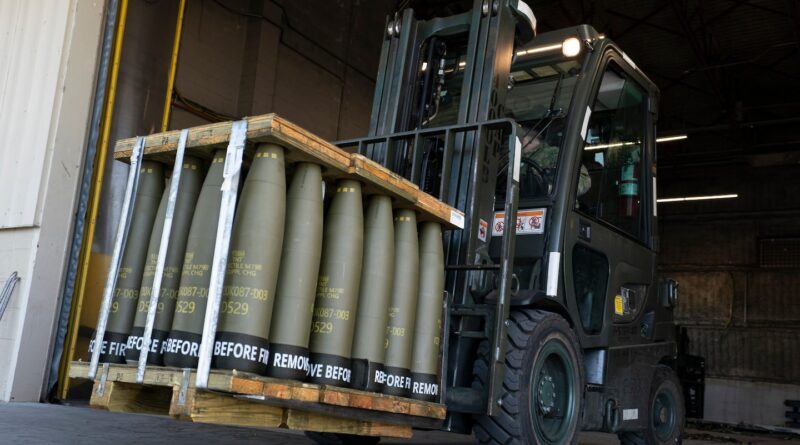With funds running out, U.S. sends more weapons to Ukraine
While Biden and his advisers have promised that Washington will support Kyiv “as long as it takes” against Russia, which after nearly two years of fighting occupies roughly a fifth of Ukraine, the future of U.S. aid is increasingly in doubt.
Already since President Vladimir Putin’s February 2022 invasion, the United States has committed $44 billion in security aid, including vehicles, air defense systems, missiles and bullets. Some of that assistance has been in the form of donations from U.S. arsenals, while other funds have gone toward procuring new weapons that must be produced in American factories, a process that can take several years.
Administration officials have suggested in recent weeks that this weapons package, known as a “drawdown” from Pentagon inventories, was the last one they could make with existing funds, seeking to leverage what they have described as a dire funding situation to push Congress to approve Biden’s request for an additional $60 billion related to the war in Ukraine.
Officials say the president’s emergency request, which also includes proposed funds for Israel in its war against Hamas militants and other national security priorities, would secure Kyiv a needed lifeline in the wake of its 2023 counteroffensive, which failed to alter what Ukrainian officials now acknowledge is a battlefield stalemate.
Lt. Col. Garron Garn, a Pentagon spokesman, said that while the administration had $4.2 billion left in its congressionally granted drawdown authority, it had run through funds the Pentagon uses to replenish U.S. stockpiles following such donations.
“Now that the replenishment funds have fallen short of drawdown authority, we will rigorously assess the implications and ensure decisions align with broader strategic objectives,” Garn said in a statement. “Without the supplemental funding, there will be a shortfall in replenishing U.S. military stocks, affecting American military readiness.”
Garn said there are also no funds remaining to place new factory orders for Ukraine.
Biden’s supplemental request would give the administration an additional $7 billion in authority to make arms donations. It would also provide $18 billion for replenishing donated U.S. stocks and $12 billion for longer-term arms-manufacturing contracts for Ukraine, along with funding for U.S. military operations in Europe and investments in manufacturing missiles, which have proved a key capability against Russia.
Garn did not say whether the administration intends to make additional donations to Ukraine despite the lack of replenishment funds.
While White House officials had hoped to secure passage of its proposal by the end of the year, the effort is now mired in negotiations over Republican demands for changes to immigration policies. An in-person appeal by Ukrainian President Volodymyr Zelensky, who visited Washington in mid-December, failed to dispel resistance from some lawmakers for further outlays for Ukraine.
White House press secretary Karine Jean-Pierre underscored the administration’s sense of urgency in securing passage of the supplemental last week.
“There’s one more … final aid that we can give to Ukraine,” she told reporters. “We are running out of aid to support the brave people of Ukraine.”
Pentagon comptroller Michael McCord appealed to key lawmakers in a recent letter that it was “essential” they act on the supplemental request. “Doing so is in our clear national interest,” he wrote. “Our assistance is vitally needed so Ukraine can continue its fight for freedom and to ensure Russia continues to fail in Ukraine.”
White House officials have emphasized Moscow’s extensive battlefield losses in Ukraine — including 87 percent of its invasion-era forces, according to U.S. estimates. But Russia has proved more capable of withstanding far-reaching Western sanctions than U.S. officials had hoped. Military production is on the rise, and Moscow is also receiving help from North Korea and Iran.
For Ukraine, an ammunition shortage is constraining front-line operations, potentially foreshadowing more dire military challenges in the year ahead. Political fissures have begun to emerge after nearly two years of national unity following the invasion. In addition to the uncertainty around U.S. aid, Hungarian Prime Minister Viktor Orban is blocking new assistance from the European Union.
While Zelensky has remained defiant, insisting Kyiv will fight until all Russian forces are expelled from Ukrainian territory, Putin has seized on Ukraine’s difficulties, saying in a year-end news conference that Western aid was “coming to an end little by little.”
Alex Horton contributed to this report.




